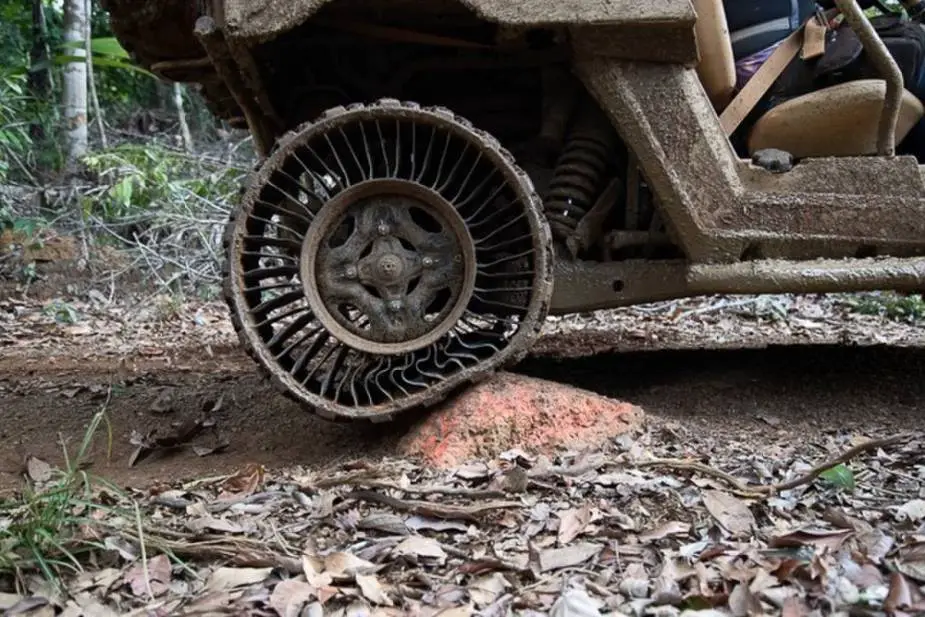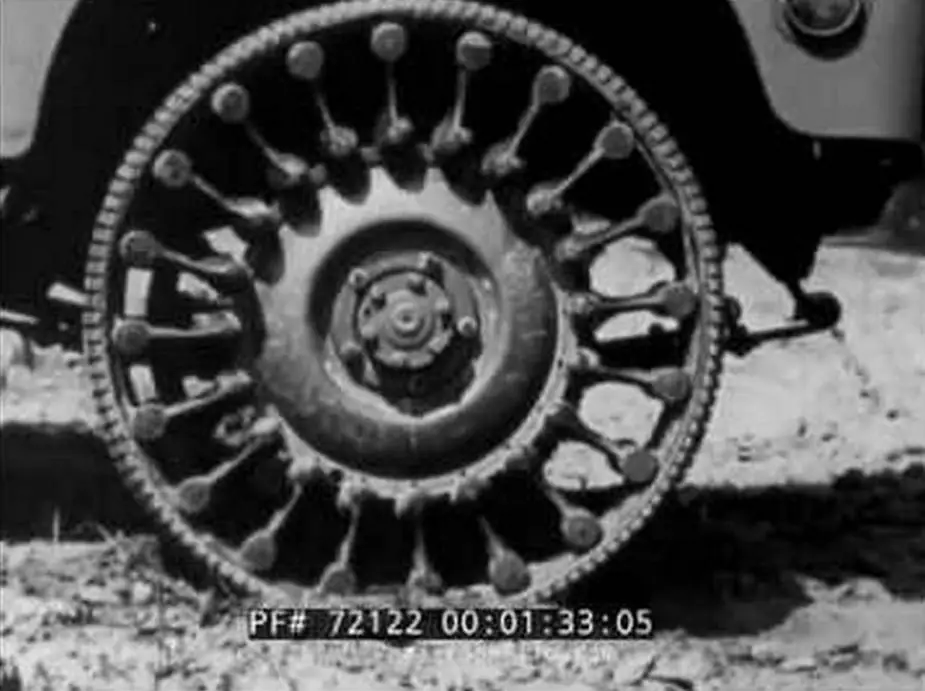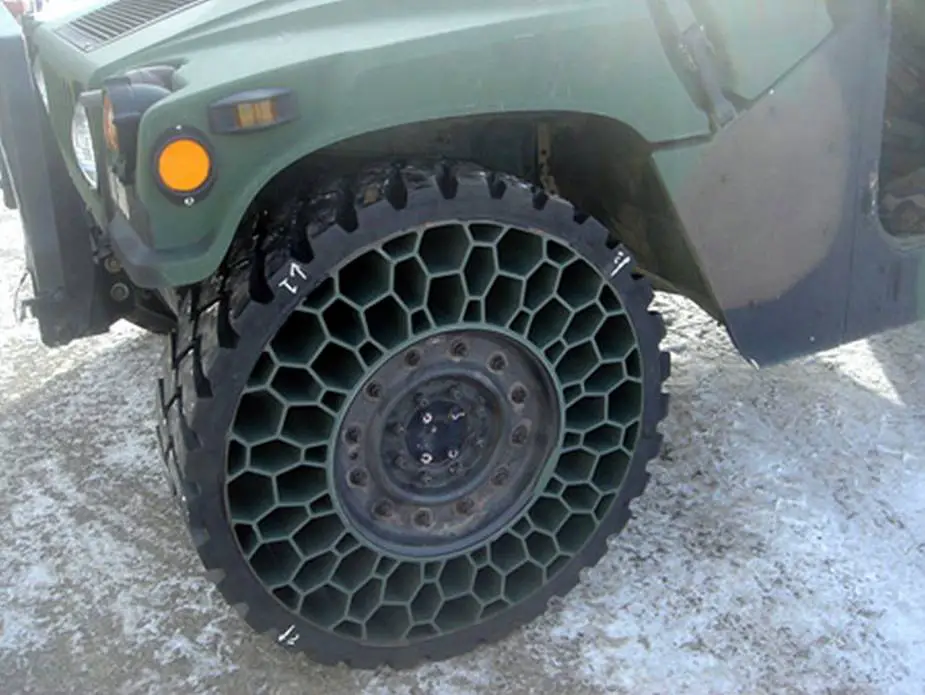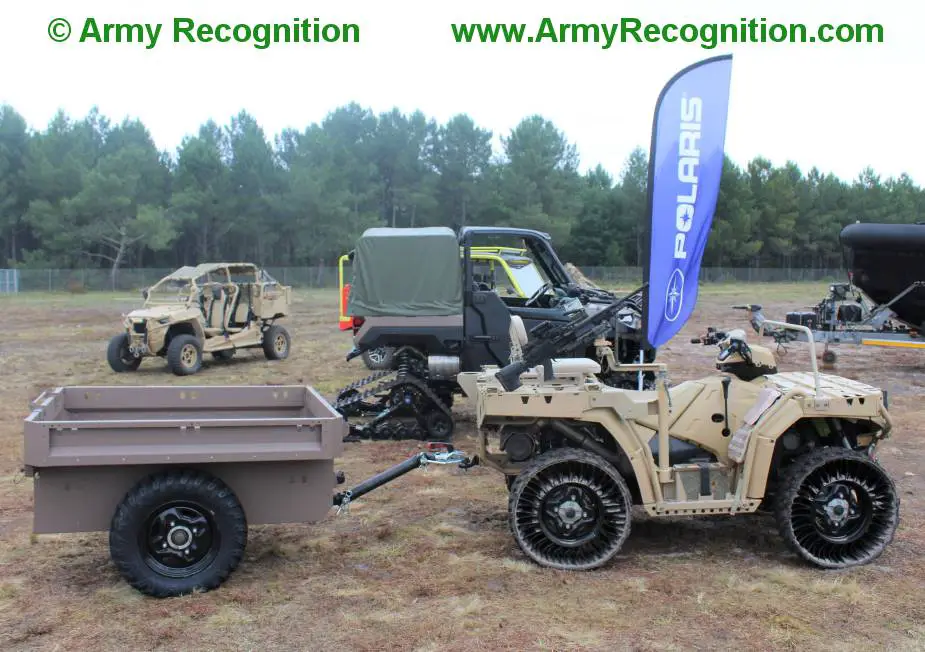Breaking news
US Army submits airless tires to punishing tropical testing.
U.S. Army Yuma Proving Ground and its constituent test centers test virtually every piece of equipment in the ground combat arsenal in extreme environments to ensure it will work wherever in the world American forces are serving. To ensure gear can survive the unforgiving rigors of jungle warfare, the Army relies on Tropic Regions Test Center (TRTC), which conducts realistic evaluations in a variety of tropical locales.
Follow Army Recognition on Google News at this link

One recent TRTC test with airless tires involved the Polaris MRZR, a military version of the popular off-road vehicle that American forces have used in places like Afghanistan in recent years (Picture source: U.S. Army)
Though the deserts of Southwest Asia have been the most common location of American military involvement for nearly twenty years, the majority of the world’s conflicts have occurred in tropical areas, which have ground conditions from dense jungles to savannas with 20-foot tall grasses. Testing equipment under inhospitable tropic conditions provides insights that may never be discovered in an environmental chamber. Will muddy, biomass-laden jungle terrain destroy the integrity of wheels and tires on a combat vehicle, for instance?
One recent TRTC test involved the Polaris MRZR, a military version of the popular off-road vehicle that American forces have used in places like Afghanistan in recent years. “It is not as comfortable, but it is sturdier and heavier with a rolling cage,” said Carlos Mora, TRTC test officer. “It is more mission-oriented.”
The MRZR under test was outfitted with Tweels instead of standard tires. The Tweel, produced by Michelin, is an airless radial tire designed to work like an ordinary pneumatic tire. In addition to the obvious advantage of never having to worry about flat tires, utilizing Tweels has second order effects that are useful for Soldiers. “One reason for this technology is to reduce weight on those small vehicles so you don’t have to carry a spare tire, jacks, or materials to fix a puncture,” said Mora.
The Tweels also have the ability to conform to multiple different terrain types, and can last three times as long as standard tires. Putting the Tweels through their paces on land deep within the jungle of the nation of Suriname that TRTC have utilized in previous vehicle tests gave the evaluation a particularly realistic operational flavor. “All of these old mining roads and logging roads were the perfect scenario for the vehicle,” said Mora. “The customer also liked the composition of the soils.”
There was also the added benefit of microclimates and terrain features that are only sometimes associated with the tropics. “We added a portion of savanna, which is a sandy terrain with small brushes,” said Mora. “It turned out to be very demanding.”
Tweels are also designed to power through serious damage for far longer than even run-flat pneumatic tires. Using a drill bit, testers damaged the Tweels to simulate as if they had been shot prior to some of the evaluations.
By necessity, TRTC provides substantially more assistance to its customers than other test centers, which are located in the United States and do not require complicated visa and country clearances from various embassies and the military for American visitors. “We always have the support of the embassy and the national police, so everything we do is sanctioned and approved by the foreign minister and the U.S. embassy,” said Ernest Hugh, TRTC director. “That’s part of the process we take care of to ensure the visit is seamless for the customer.”
The American embassies and associated military groups within each delegation assist TRTC in securing the necessary permissions to conduct testing in a variety of countries. “We work closely with the United States embassies in all of the host nations in which we conduct tests,” said Hugh.

Airless Martin rubber tires tested on a Jeep in 1942 (Picture source: print screen of U.S. Army archive film)
Army Recognition comments
Airless tires were first tested by the U.S. Army during World War 2 on Jeeps, as the attached print screen of an archive video demonstrates. The tesst were carried on with Martin tires. Wooden and metallic tires were tested too, with no satisfactory results, as one can easily guess.

Airless tube tested by Michelin on a Humvee (Picture source: U.S. Army/Michelin)
For a couple of years, Michelin has been carrying on more tests with airless tires. Some tires have been tested on a Humvee.
What special forces operators told Army Recognition about the use of airless tires on Polaris quads is that those tires are best used on rocky and sandy soil but not in deep mud, where mud accumulates in the empty slots, rendering the vehicle harder and harder to drive, on top of slowing it because of the already heavier type of tire. The steering becomes inaccurate too. This type of tire is not adapted to snow either.

Polaris Quad of the French Special Forces with airless tires at SOFINS 2021 (Picture source: Army Recognition)

























